Art sideblog of arthro. Not just bugs (but there will be plenty!)
Don't wanna be here? Send us removal request.
Text
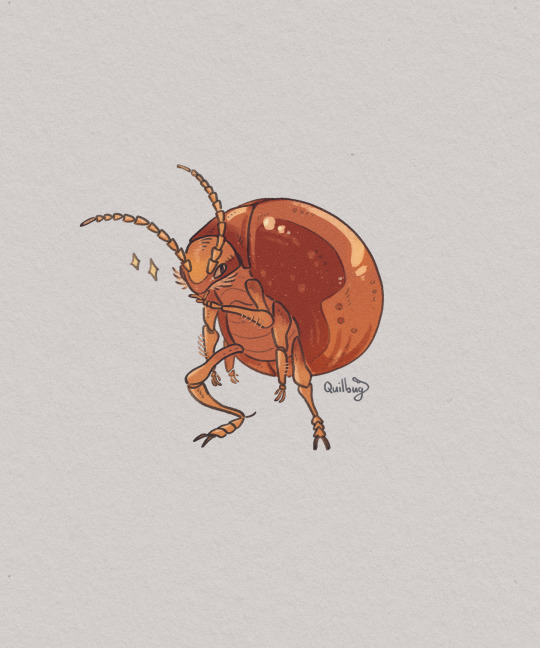
Insectember day 2: gibbium psylloides
Common name: Hump beetle/ Smooth spider beetle✨
174 notes
·
View notes
Text
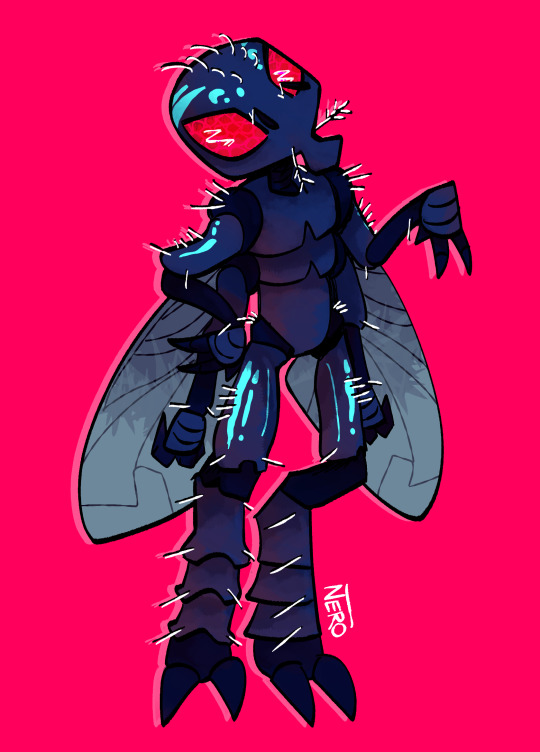
attack on DannyFly
he drew my fly sona [bottom left] first so obviously i had to revenge!
#other's art#cool art#bug furry#bugfolk#insect#bug anthro#bug people#fly#we were included in the same mass attack!! It was awesome#love your style
53 notes
·
View notes
Text
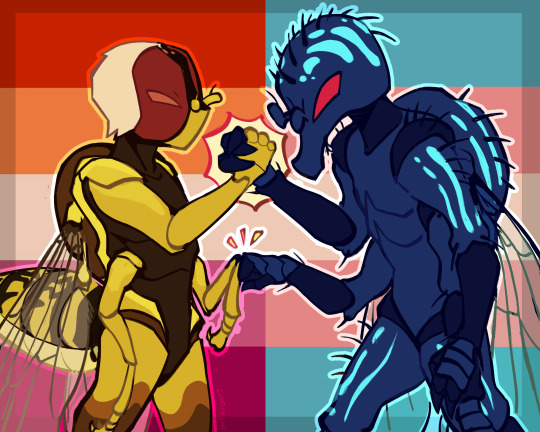
butch-transman solidarity!! (also we are both flies)
Art fight attack for @itsdannyfly !
#arthro's art#furry#insect#hoverfly#fly#oc: gemma#art fight#bugfolk#bug furry#bug anthro#bug people#trans#butch#lesbian#these characters are one cis butch and one trans man of unspecified orientation#but big ups to the butch AND trans people out there too!
39 notes
·
View notes
Text
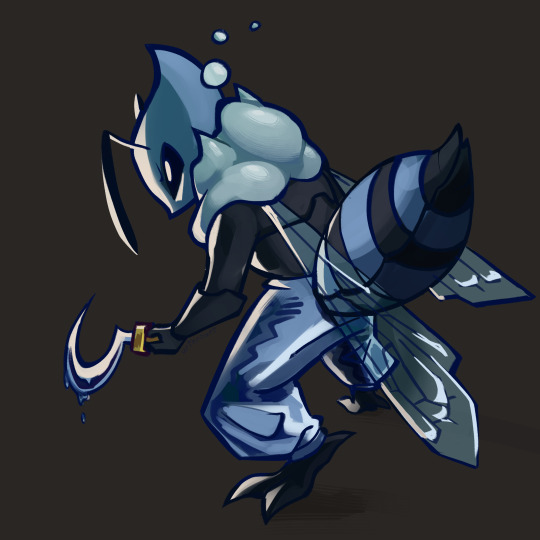
A bee for Twispan on Art Fight! I went with a toonier style for this one to match the existing reference. The character is based on a blue-banded bee, but I think I made the abdomen sort of resemble that of a sharptail's (Coelioxys sp.)!
#arthro's art#furry#bugfolk#art fight#insect#bug furry#bug anthro#bug people#bee#scythe#weapon#big fan of the storm/rain motif of this character
21 notes
·
View notes
Text
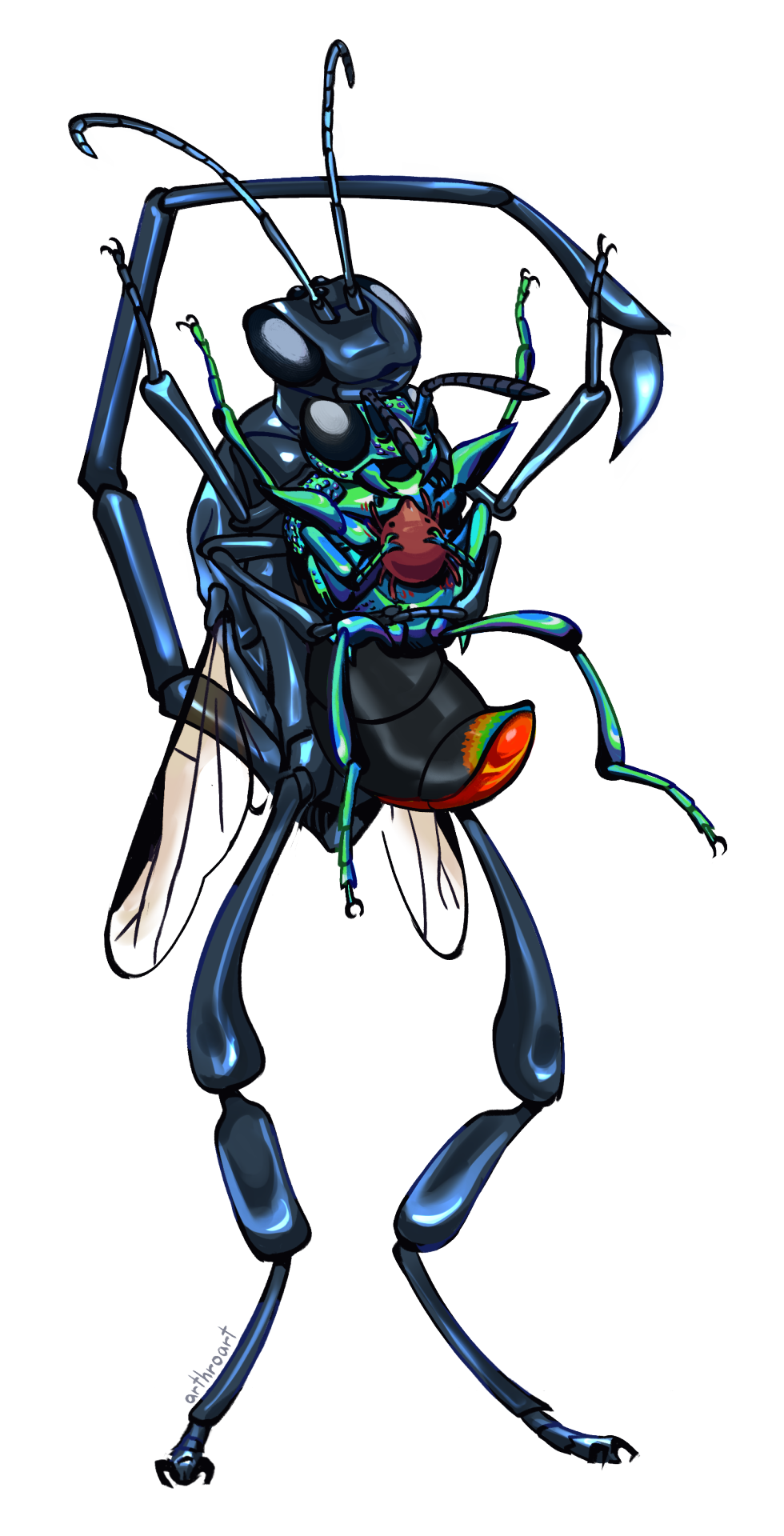
The legendary wasp gf (and pet mite) stack Art fight attack for @fractalbeehive ! The characters were too adorable to pass up.
113 notes
·
View notes
Text

Webspinner lady with.... I can't remember what that art is called
I'd like to find a webspinner in person, they're such interesting little fellas
107 notes
·
View notes
Text

Revenge for @arthroart 👊🤜
#this is so fantastic#i want to show it to everyone i know#and several i don't#others art#oc:sunset#insect#bee#bug furry#bug anthro#bug people#thanks so much for the amazing patch!!
13 notes
·
View notes
Text

"I love what you did with your hair"
artfight revenge for @hissydyke with @arthroart as collateral damage. thought it'd be fun to draw both of the colorful bee ladies on my 2024 hit-list together.
#The buzzbians!!#Les-bee-ans?#I could stare at this all day#others art#I may actually stare at it all day seems like a good use of time#Bee#OC:sunset#Insect
325 notes
·
View notes
Text
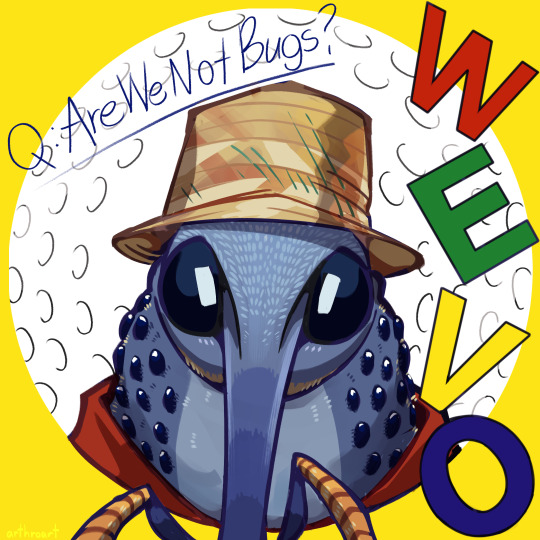
Q: Are We Not Bugs? A: We Are Wevo! Art fight attack for @mojavewastes
166 notes
·
View notes
Text
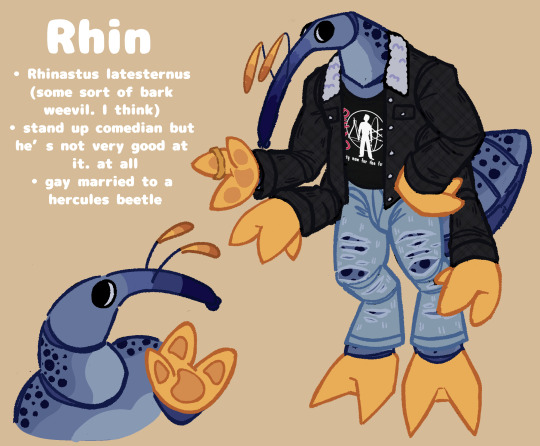
Made a reference for a new oc !
#others art#This character is on art fight now? Evil grin#Lovely concept#bug furry#bugfolk#insect#bug anthro#Weevil#Beetle
153 notes
·
View notes
Text
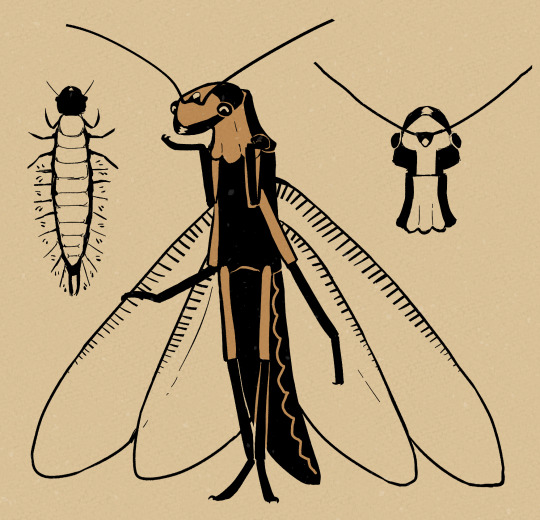
A dobsonfly.
I think that the lace like design on her body is very cute😊
#wow!#i love that she even has a hellgrammite larval form drawn#excellent lineart#others art#dobsonfly#bug furry#bug art#insect
27 notes
·
View notes
Text
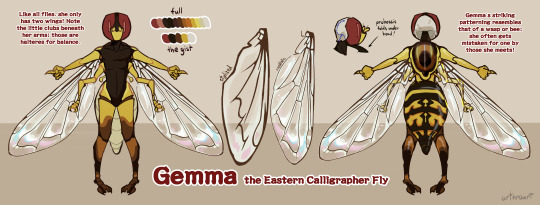
Since the last reference I did of this character is 5 years(!) old, I've decided to make a new one for my main sona, Gemma! She studies rotifer ecology and has a sweet proboscis.
#arthro's art#hoverfly#oc: gemma#bugfolk#bug furry#bug anthro#furry#bug people#anthropomorphic#art fight is whipping me into shape when it comes to references
36 notes
·
View notes
Text
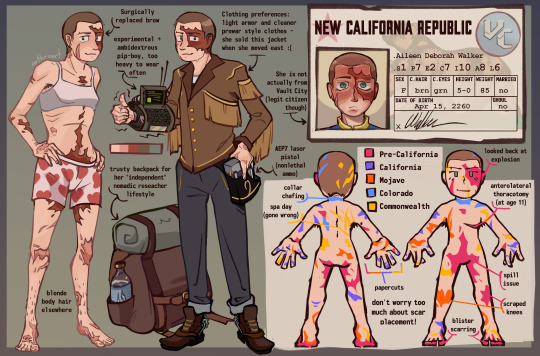
So called high charisma vault anthropologists when you take their citizenship photo
#arthro's art#fallout#oc: walker#butch#it took me like 4 different tries to make this ref#had to make it fun for myself... lighthearted like her boxers
16 notes
·
View notes
Text
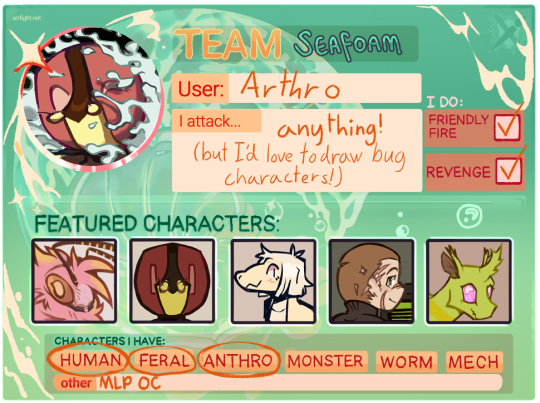
As per my last post: I'm on team seafoam this year! Here's my art fight profile, and the link to my page :)
6 notes
·
View notes
Text
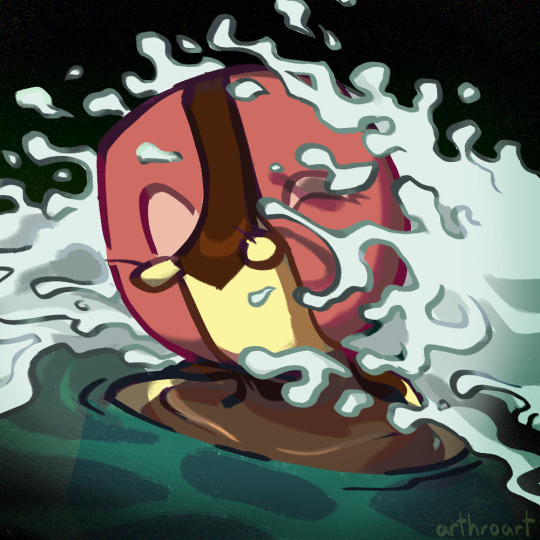
team seafoam: are we ready?
6 notes
·
View notes
Text
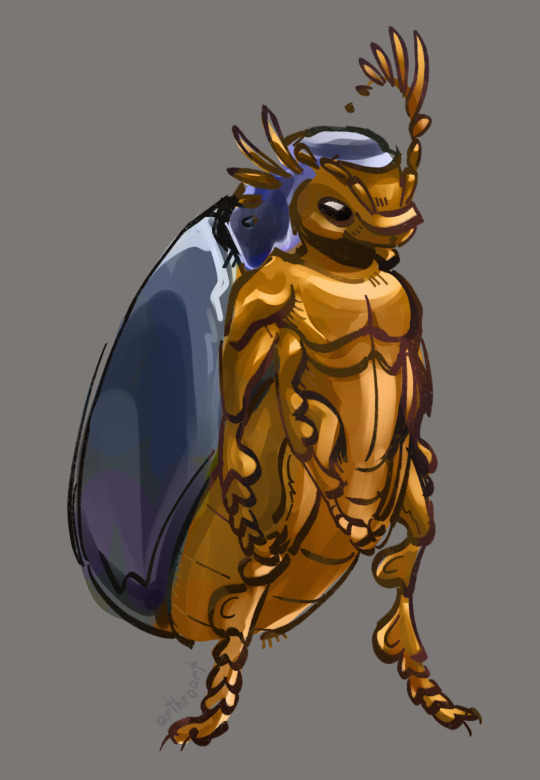
Fantasy beetle - no real species for this one, just playing with shading.
#arthro's art#bugfolk#bug furry#bug anthro#bug people#anthropomorphic#beetle#i did take cues from chrysomelids though
31 notes
·
View notes
Text
Alright, it's time! The species is...



Hey, you guys figured it out! She is indeed Halictus ligatus. For those interested in how to tell, here are some diagrams and tips:
The best way to figure out a species is to go through a dichotomous or multivariable key, but those are often hard to follow if you don't know the terminology. Halictus ligatus is in the family Halictidae, which is most readily determined from other bees by the super curved basal vein on their wings (see it next to the curved red arrow on the image). In comparison to Megachilidae, they have very few hairs on the underside of their abdomen. The numbers in the image correspond to the number of submarginal cells, which is always 2 in Megachilidae and often (not always) 3 in Halictidae.
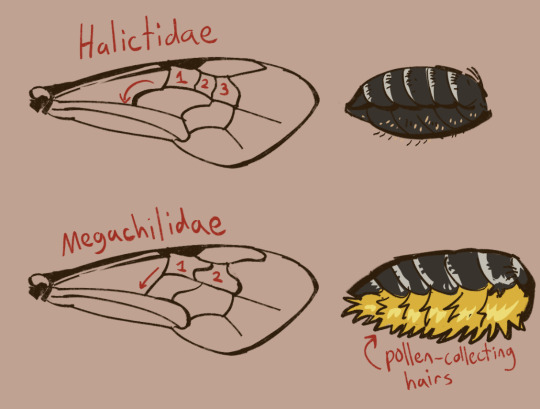
As for getting to Halictus, there are only so many halictid genera in the northeast US, most of which are colored bright racecar green. The two most common halictid genera that have totally non-metallic representatives are Halictus and Lasioglossum. The mega-diverse Lasioglossum is usually totally without stripes of short hairs called fimbria, but some larger specimens have that sort of banding. When they do, you can tell the two genus apart by where those bands of fimbria arise: Halictus has hairs at the very end of the segment (apical), while Lasioglossum has them jutting from the very beginning of the segment (basal).
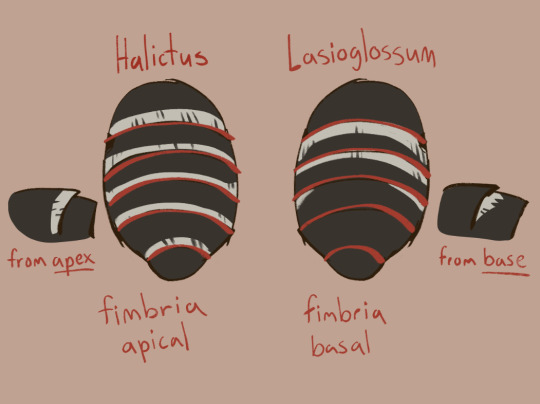
The last part, identifying to species, is actually fairly easy. Halictus ligatus has a really prominent knob at the bottom of their cheek, and they're the only Northeastern US bee to have that property. More southern states also have the practically identical H. poeyi. Scientists haven't figured out how to tell them apart without DNA analysis, so a limited range hint was the only way I could represent that difference. Putting it all together:
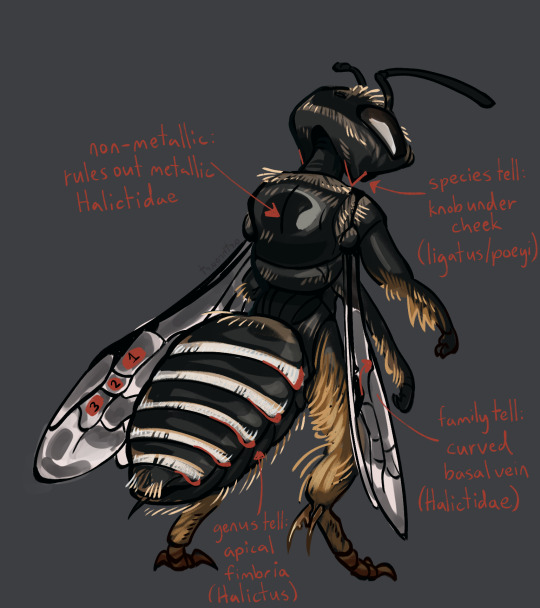
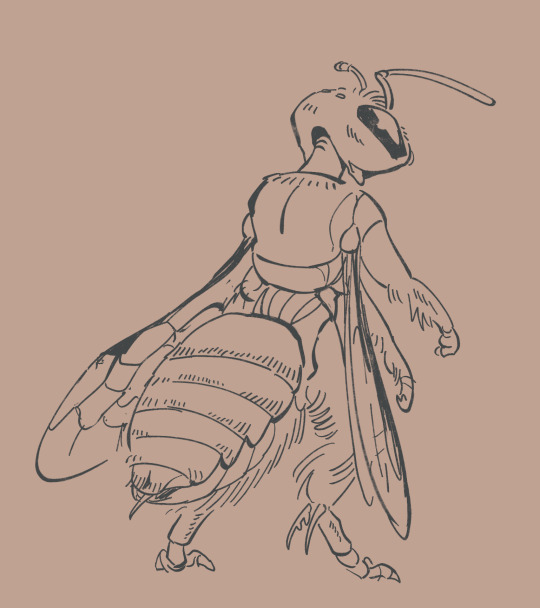
Little native bee anthro sketch! I'm trying to find a medium between accuracy and stylization. I want to get to the point where people can identify my characters down to species just from the drawing. If you can successfully tell what this is, extra brownie points to you! (I'll reveal the species in a couple of days anyway.) Hint: assume this bee lives natively in the northeastern US.
#arthro's art#halictus ligatus#bee#entomology#bug furry#bug anthro#bug people#we're getting educational now!#To be honest#this was mostly a scheme to see where my eye for artistic/scientific form is lacking via crowdsourcing#and it worked! so thank you all :)
774 notes
·
View notes